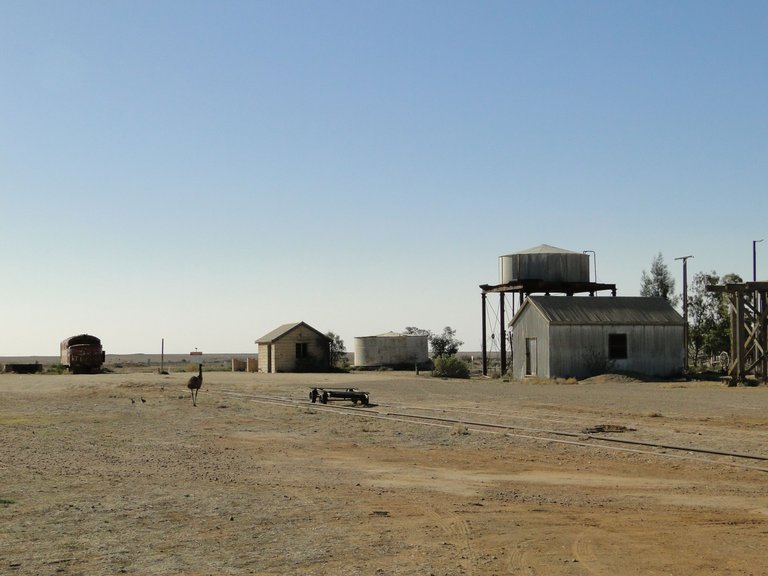Lewis Gun (Machine Gun) Used to Kill Emus in the Great Emu War, 1932
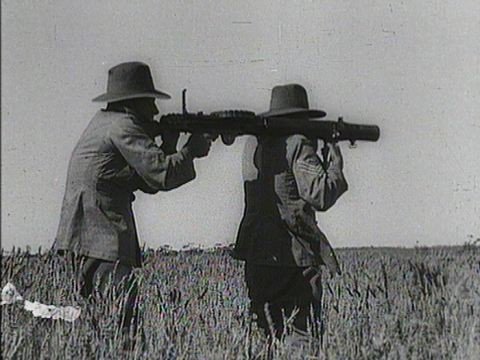
Credit: Author Unknown. Wazee Digital. Public domain.
The emu, a flightless bird in Australia, loved by all. Well, not all. In 1932, the Australian government waged war against the emu. The war lasted for all of two months, and though humans carried machine guns, the emu was the undisputed victor.
An Emu
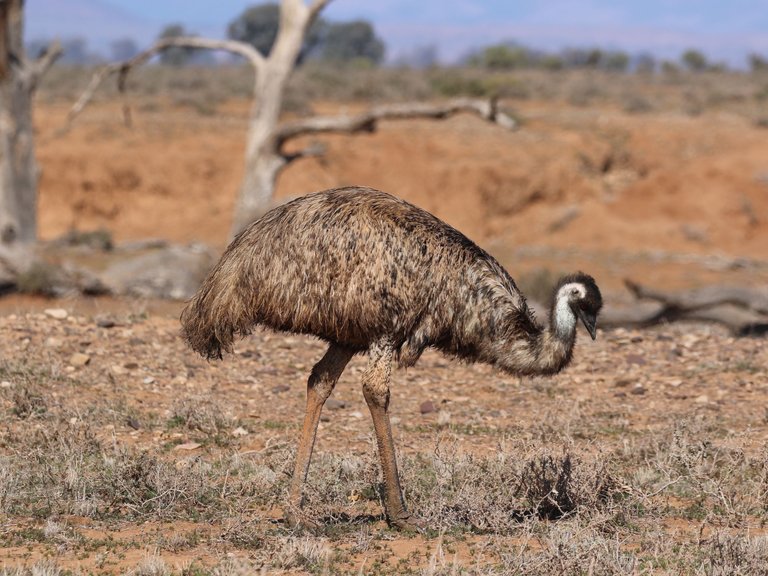
Credit: Donald Hobern from Copenhagen, Denmark. Used under CC 2.0 license.
I learned about this peculiar chapter in the ongoing saga of man vs nature as I explored the habits of flightless birds. The emu is the second largest bird in the world. That is, the second tallest, though not the second heaviest.That honor goes to the cassowary.
The tallest, and heaviest bird in the world is the ostrich -- also a flightless bird. Ostriches are native to Africa (though some may be found in Australia). The emu is native to Australia, although it was once also found in Tasmania.
Emus laid claim to Australia about 80 million years ago. According to most recently discovered fossil evidence, humans did not arrive on the continent until 20,000 years ago. So, in a sense, humans were squatters on land previously occupied by emus.
However, this argument did not prevail in 1932. That's when a large emu migration conflicted with a significant human migration. The Australian government had settled veterans of WWI on western lands in hopes of developing that territory. These farmers struggled against the elements. They seemed to manage, with difficulty, until a drought drove emus (20,000 of them!) to migrate in unusually large numbers from coastal grazing grounds.
To complicate matters, Australia, and the entire world, was plunged in the Great Depression. Economic survival, everywhere, was a challenge.
Damage Caused by Emus, 1932 Western Australia
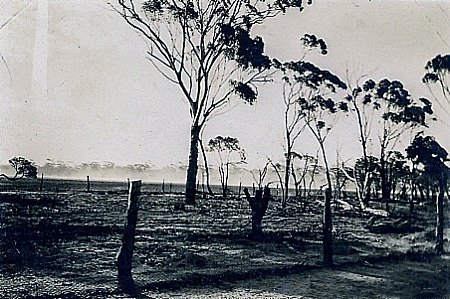
Author unknown. Source Pickering Brook Heritage. Public domain
Emus eat plants, seeds and insects. They are not discriminating in their diet and will eat just about any kind of vegetation. Hence the difficulty with farmers.
Migrating emus ate crops. Not only did the emus consume crops, but in pursuit of food, they trampled what they did not eat. They tore holes in fences and thus allowed other 'pests', such as rabbits, to invade farms. It happened that at the same time, farmers were also fighting off a rabbit invasion.
The Emu
This tallest bird of Australia is also its national bird. It is a member of the Ratite family, a family of flightless birds. The existence of flightless birds fascinates me. It would seem that their chances of survival should be minimal, because of the difficulty in eluding predators. However, nature accommodates.
Traditionally, it was believed that the existence of flightless birds could be traced to the time, millions of years ago, when the continents separated.
Supercontinent Gondwana, 420 Millions Years Ago. Focal Point, South Pole

Credit Fama Clamosa. Used under Creative Commons Attribution-Share Alike 4.0 International, 3.0 Unported, 2.5 Generic, 2.0 Generic and 1.0 Generic license. As @eniolw clarifies in the comment section (below this blog), "Gondwana ('s)... breakup started about 180 million years ago and birds probably appeared after that". Or at least, that's the most likely theory :)
It seems, however, from DNA evidence, that most flightless birds actually flew once, or at least their ancestors did. It is believed that the ancestors arrived by flight long ago, and then evolved to being flightless. Most of the flightless birds evolved on oceanic islands, where predators did not exist. This development, loss of the ability to fly, took place after the extinction of dinosaurs.
In the dinosaur-free environment flightless birds thrived. That is, they did until humans appeared on the islands. With the introduction of humans, many species of flightless birds became extinct.
In New Zealand and Hawaii, for example most of the 20 species of flightless birds that had evolved, became extinct.
Moa, Flightless Bird of New Zealand, Now Extinct
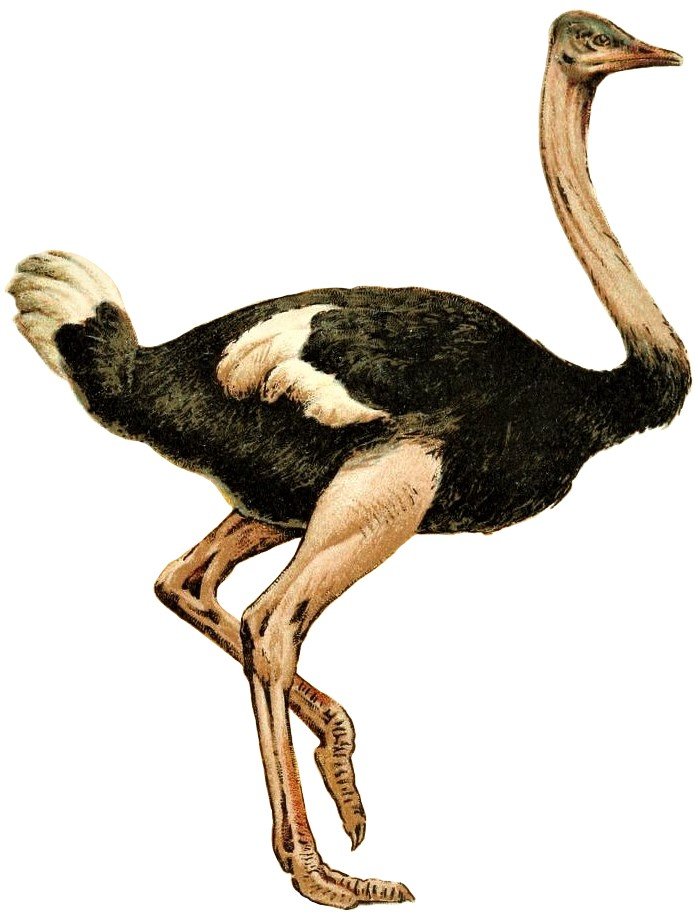
Pycraft, W. P., author, Book of Birds. Public domain. The Moa was driven into extinction, about 600 years ago on New Zealand. Cause: hunted out of existence and also change in habitat.
Most flightless birds have very strong legs and can run quickly. Most are very large, because their heavy bodies are not an impediment to flight, which would be the case in other bird species. Gigantism is characteristic of most flightless birds. An exception to this gigantism is the kiwi. Although the kiwi is the smallest of the Ratites, still, as birds go it is quite large. A kiwi weighs in at 4.5 to 8.5 pounds, and stands at 1.5 to 2 feet tall.
Kiwi, National Icon of New Zealand
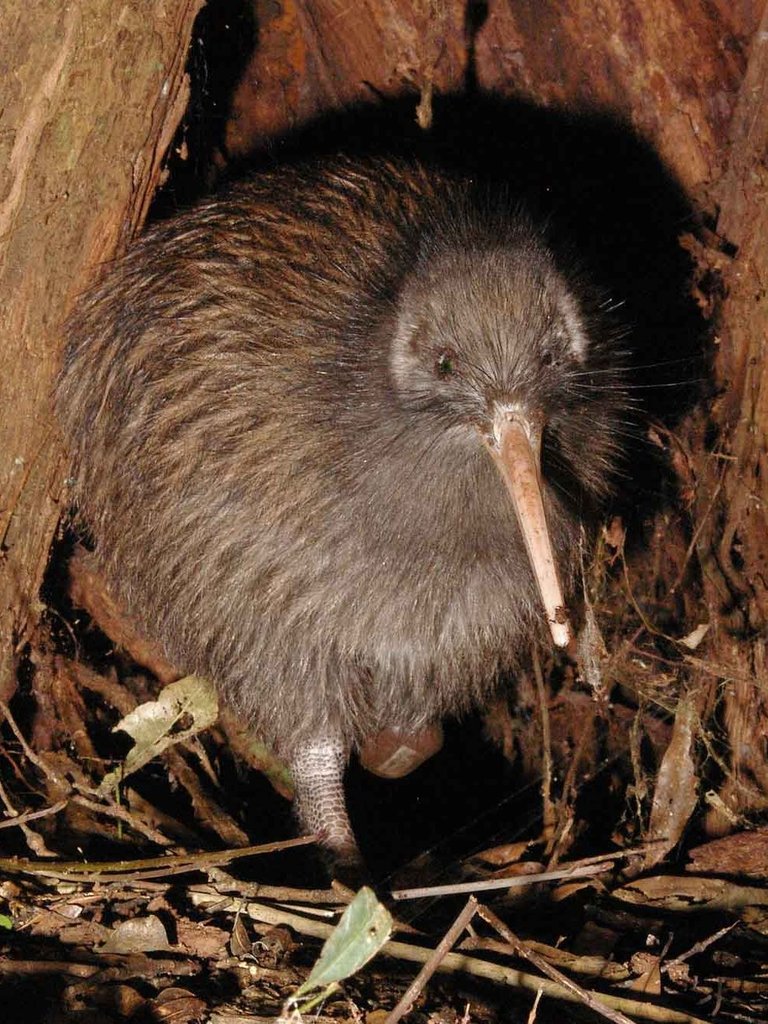
Maungatautari Ecological Island Trust. Public domain.
In the case of the emu, the strong legs and swift speed turned out to be great defenses against the human weaponry during the Great Emu War. The legs also serve as defenses against the emu's main predator, the dingo. The powerful kick of an emu can effectively fell a dingo.
One of the challenges facing Australian farmers in their struggle against the emu invasion was the emu's very successful breeding rate. It is estimated that 75% of emu chicks survive to adulthood. Contrast this with most bird species, in which only 30 to 40 percent survive.
Emu Father Guiding Chicks
Peterdownunder. Used under Creative Commons Attribution-Share Alike 4.0 International license..
The high survival rate of emu chicks may be due to the devoted care of the father. Emus in the wild are not monogamous. A female searches for an unpaired male and mates with him. Often there are fights between females over unpaired males.
This rivalry over unpaired males is not surprising. Once a female has laid her eggs (after about five months of remaining with a male), she takes off. The male incubates the eggs for about 8 to 10 weeks. He rarely leaves the nest and is said to often lose much of his body weight during this process because he fails to eat.
Youtube Video of Male Emu Brooding Eggs
When the chicks are growing, it is the male that shepherds them into adulthood. This takes approximately 18 months.
One vulnerability of flightless birds, including emus, is that they are mostly ground nesting. The emu nest is prepared by the male. He digs a little hollow in the ground and arranges twigs and leaves. The female lays her clutch (between five and fifteen eggs), and then leaves her male partner to do the rest. She may go off and mate with another male while he is occupied.
Although ground nesting would seem to make the emu young relatively vulnerable, the watchful care of the father helps to insure their safety.
**Youtube of Fiordland Crested Penguin, a Flightless Bird That Nests in Cliffs and Crevices and Underground
As mentioned earlier, the stage was set for the war by the Great Depression and a drought. Foraging emu destroyed struggling farmers' fragile crops. Farmers cried foul and insisted the government help to rid them of the 'vermin' (emus).
The Australian offensive force consisted of three men from the Royal Australian Artillery. The men were confident that their machine guns would make short work of the emu. Things didn't work out that way, though. It turned out, the emus were smarter than they looked.
Emu Eggs and Soldiers Resting by a Watering Hole: Picture Taken During the War
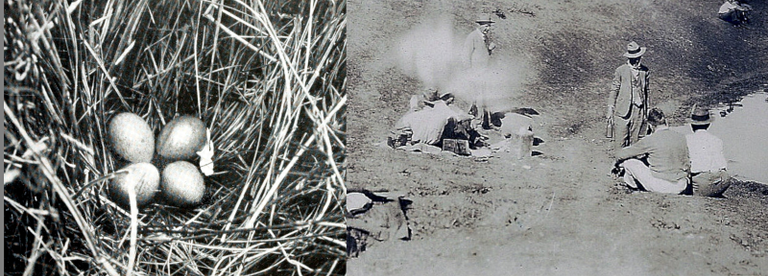
Credit: 子ファース. Used under public domain license.
One observer of the war suggested (tongue in cheek) that the emus were using guerilla tactics. They would send one large bird to their perimeter while the others foraged in the fields. When the humans appeared with guns, the lookout would alert the others and they would scatter. The animals ran so fast, and in such a disorganized way, that they made poor targets.
Smarter Than They Look?
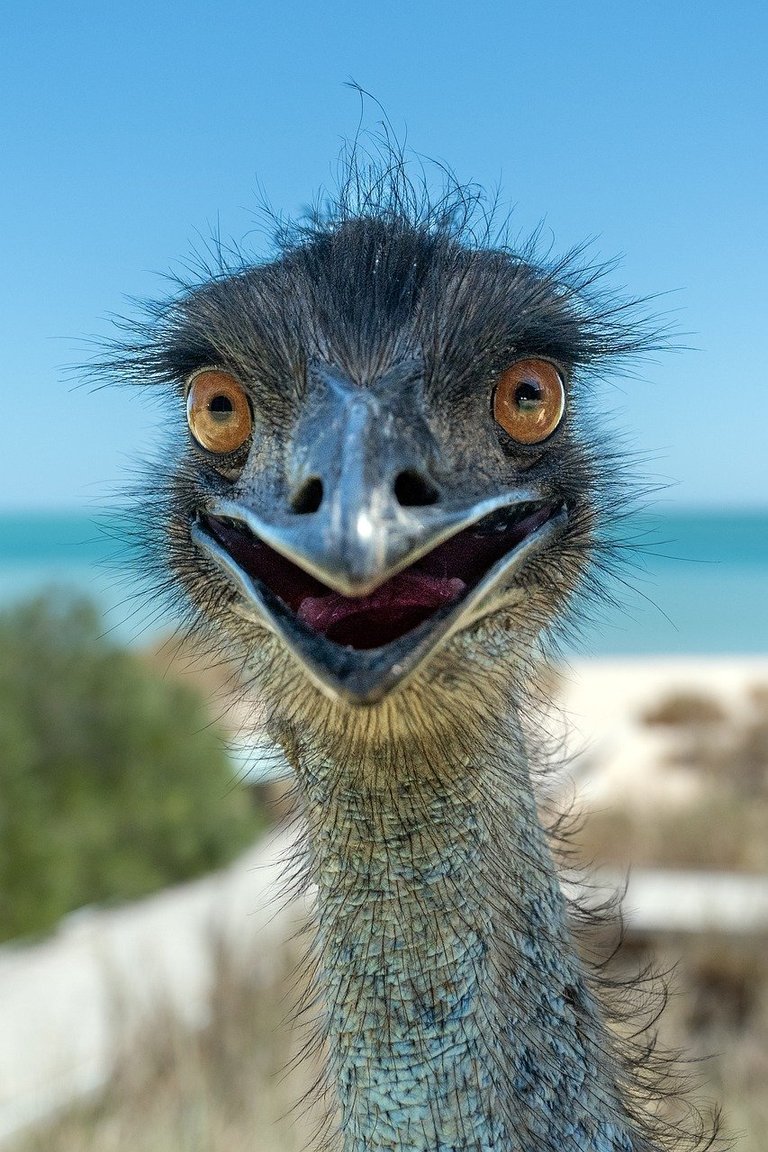
Credit: XiSerge on Pixabay
Even when they were hit, unless it was a great shot to the head, the emus' thick feathers seemed to deflect bullets. One soldier noted of the emus: They can face machine-guns with the invulnerability of tanks...
The war lasted from November to December of 1932. Many thousands of ammunition rounds were spent during the campaign. Estimates of the number of emus killed vary wildly, from 20 to hundreds, but the number was vastly disproportionate to the resources expended.
At the end of the war, the government faced ridicule and one newspaper concluded: No treaty of peace has been concluded, and the emus remain in possession of disputed territory.
Conclusion
The farmers in Australia did not give up their campaign against the emu. The government issued ammunition to individual farmers, and also offered a bounty on emus killed. Over 57,000 were killed over a six-month period. In the years that followed, hundreds of thousands were killed.
Today the emu enjoys protected status and the population is stable.
That's it. My account of the Great Emu War of 1932. Hope you were entertained.
To all my readers, be well, and peaceful.
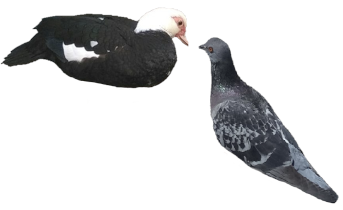
Credit: @yaziris and @muelli from the LIL Gallery
- End Illustration
@yaziris pigeon
https://www.lmac.gallery/lil-gallery-image/7643
@muelli bird
https://www.lmac.gallery/lil-gallery-image/8115
Research
https://www.toppr.com/ask/question/which-among-the-following-is-australias-national-bird/
https://nationalzoo.si.edu/animals/emu
http://bioweb.uwlax.edu/bio203/s2012/hawes_jenn/habitat.htm
https://australian.museum/learn/science/human-evolution/the-spread-of-people-to-australia/
https://www.sandboxx.us/news/this-is-the-story-of-the-australian-emu-war-of-man-vs-beast/
https://www.themeateater.com/conservation/wildlife-management/the-great-emu-war-of-1932
https://www.environment.nsw.gov.au/topics/animals-and-plants/native-animals/native-animal-facts/emu
https://historycollection.com/british-went-war-birds-lost-1932-emu-war/
https://www.toppr.com/ask/question/which-among-the-following-is-australias-national-bird/
https://www.technology.org/how-and-why/why-are-some-birds-better-off-when-being-unable-to-fly/
https://avibirds.com/large-flightless-birds/
https://royalsocietypublishing.org/doi/10.1098/rsos.170975
https://nationalzoo.si.edu/animals/north-island-brown-kiwi
https://www.doc.govt.nz/nature/native-animals/birds/birds-a-z/kiwi/
https://www.oaklandzoo.org/animals/emu
https://www.publish.csiro.au/ZO/ZO9950365
https://www.environment.nsw.gov.au/topics/animals-and-plants/native-animals/native-animal-facts/emu
https://www.abc.net.au/science/articles/2000/08/01/2689167.htm
https://birdfact.com/articles/emu-nesting
https://www.wildlife.vic.gov.au/__data/assets/pdf_file/0025/91384/Emu.pdf
https://www.britannica.com/topic/Emu-War
https://listverse.com/2017/03/12/10-crazy-facts-about-the-great-australian-emu-war/
Hive On!
